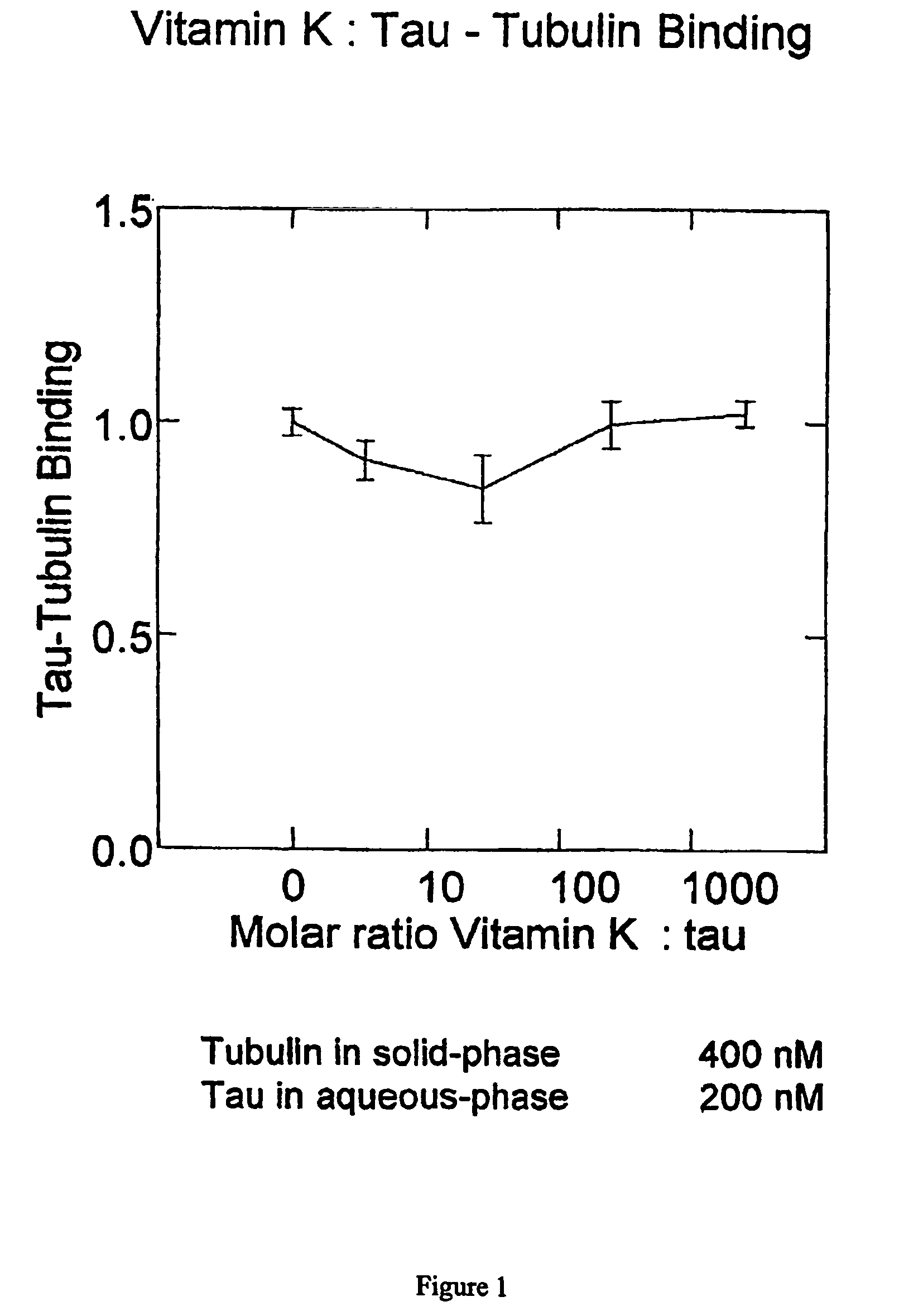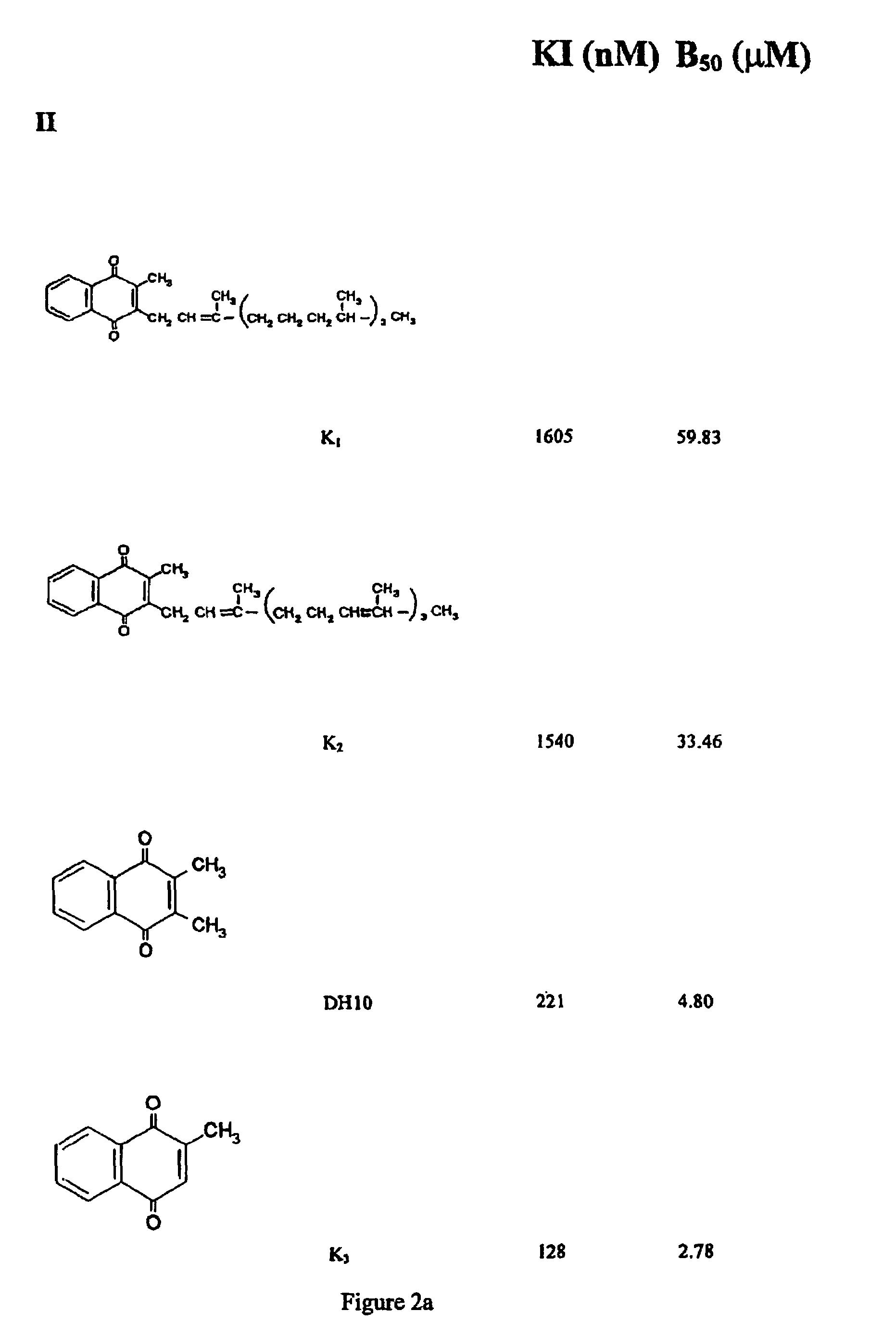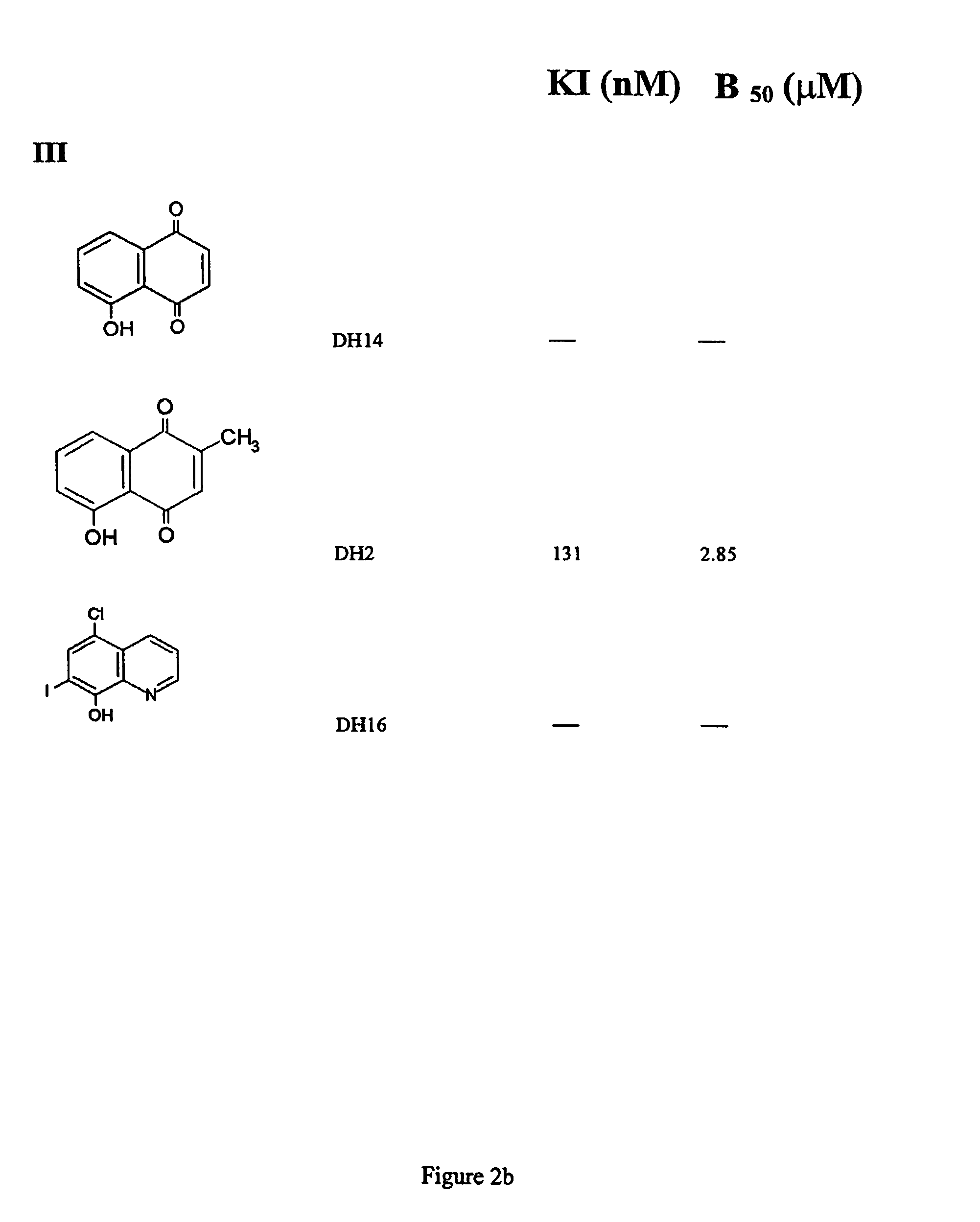Napthoquinone derivatives as inhibitors of tau aggregation for the treatment of alzheimer's and related neurodegenerative disorders
a neurodegenerative disease and alzheimer's disease technology, applied in the field of napthoquinone derivatives, can solve the problems of not being able to demonstrate and optimise the role of napthoquinone-type compounds in the inhibition of aggregation of proteins associated with neurodegenerative disease, and achieve the effect of low toxicity and high activity
- Summary
- Abstract
- Description
- Claims
- Application Information
AI Technical Summary
Benefits of technology
Problems solved by technology
Method used
Image
Examples
example 1
In Vitro Tau-tau and Tau-tubulin Binding
[0143]Vitamin K2 was found to have some activity in the tau-tau binding assay in vitro. For values less than 100 μM, the apparent KI value in vitro is 942 nM. However, Vitamin K2 does not inhibit tau-tubulin binding in vitro at concentrations up to 500 μM (i.e. 2500:1 molar ratio with respect to tau in the conditions of the assay)—see FIG. 1.
[0144]Further data (not shown) demonstrated that DH3 (FIG. 2d) caused inhibition at concentrations greater than or equal to 50 μM (with tau concentration 100 nm). However menadione (FIG. 2a) did not show activity in the in vitro assay, possibly due to its reduced solubility.
[0145]On this basis, further structure-activity characterisation was undertaken using the cell based assays which can be more readily used with compounds of different solubilities.
example 2
Tau-tau Inhibition Using Cell Based Assay I
[0146]FIG. 2a shows the structures of vitamins K1-K3 and 2,3-dimethyl-1,4-naphthoquinone (denoted DH10) which is closely related to K3 (2-methyl-1,4-naphthoquinone(menadiol)).
[0147]The corresponding values are listed for apparent KI and B50 calculated from the cell data using the T40 / 12 kD cell assay to determine extent of inhibition of tau-tau binding as described above.
[0148]By comparing structures with inhibitory activity in cells, it is apparent that longer side-chains at the 3′ position are associated with reduced activity.
[0149]FIG. 2b shows two 5-hydroxy 1,4-naphthoquinone derivatives. Comparison of DH14 and DH2 suggests that the methyl group in the 3′ position may be preferred to enhance activity, and that the hydroxy group in the 5′ position is not detrimental. DH2 proved to be the most highly toxic of all the compounds tested, with a cellular LD50 value of 2.1 μM. The DH16 compound did not show any activity.
[0150]FIG. 2c shows the...
example 3
Tau-tau Inhibition Using Cell Based Assay II
[0155]To confirm the results obtained using cell based assay I, further experiments were performed with cell based assay II.
[0156]FIGS. 3a and 3b show that this proteolytic processing can be blocked in this system using Vitamin K3 (menadione) at concentrations of 1-2 μM. FIG. 3a shows that the conversion of T40→K25 is reduced to about ¼ of that seen without K3, and FIG. 3b shows that the conversion K40→K25 is reduced to about ½ of that seen without K3. From this it can be inferred that the conversion of T40→K40 is also reduced to about ½ of that seen without K3.
PUM
| Property | Measurement | Unit |
|---|---|---|
| pH | aaaaa | aaaaa |
| charge | aaaaa | aaaaa |
| aggregation | aaaaa | aaaaa |
Abstract
Description
Claims
Application Information
 Login to View More
Login to View More - R&D
- Intellectual Property
- Life Sciences
- Materials
- Tech Scout
- Unparalleled Data Quality
- Higher Quality Content
- 60% Fewer Hallucinations
Browse by: Latest US Patents, China's latest patents, Technical Efficacy Thesaurus, Application Domain, Technology Topic, Popular Technical Reports.
© 2025 PatSnap. All rights reserved.Legal|Privacy policy|Modern Slavery Act Transparency Statement|Sitemap|About US| Contact US: help@patsnap.com



